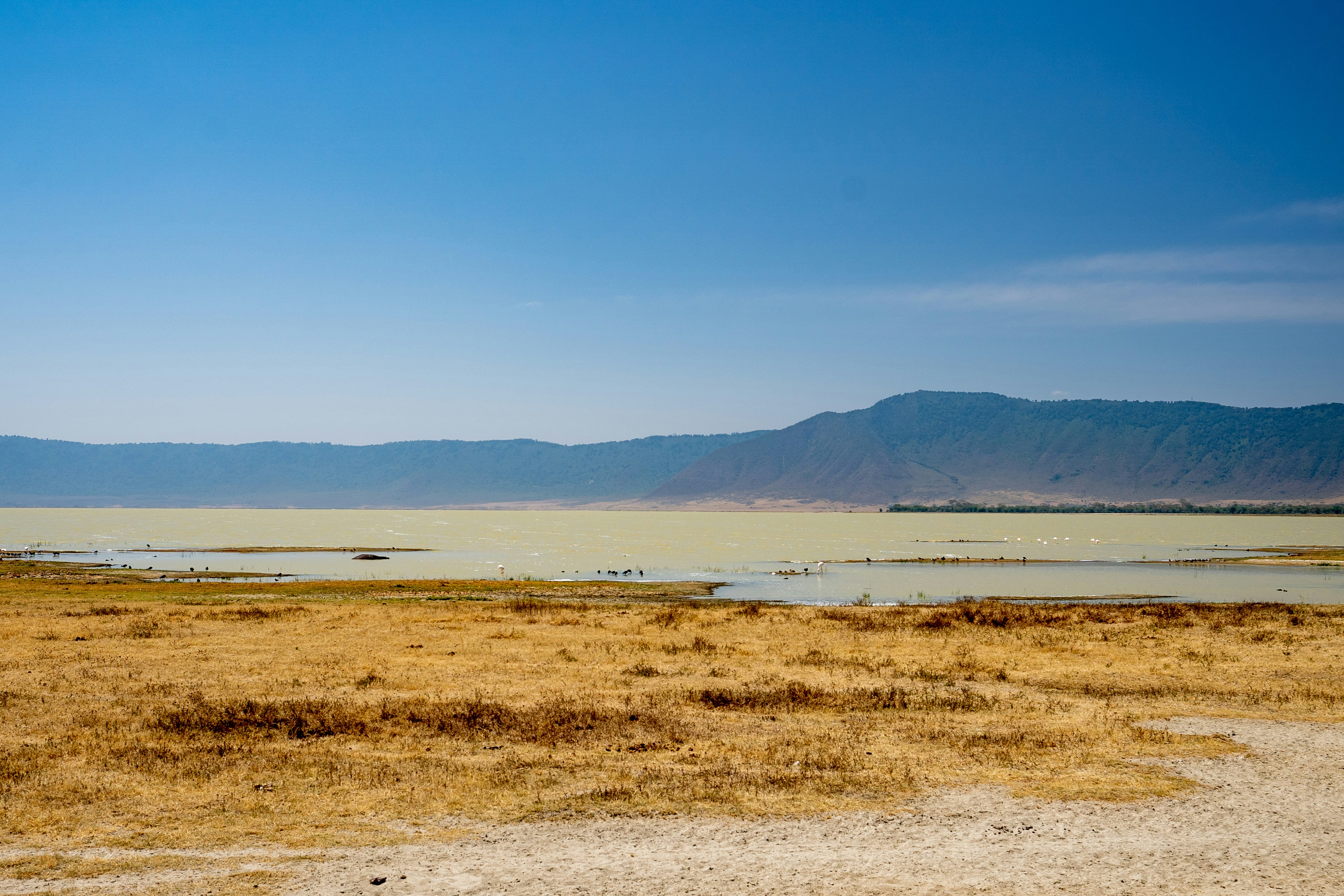
Tanzania Destination Guide
Ngorongoro Crater & Conservation Area
Like a pot of gold

Tanzania Destination Guide
Like a pot of gold
Conservation Area: 8,292 km² (3,201 mi²)
Crater Floor: ~260 km² (~100 mi²)
1959
Year-Round
Dubbed the “Eighth Wonder of the World,” the Ngorongoro Crater spans ~260 km² (100 mi²), supporting an estimated 25,000–30,000 large animals, including herds of wildebeests, buffaloes, and zebras—not to mention predators like lions and spotted hyenas. Steep crater walls, rising ~600 m (2,000 ft), shape a year-round wildlife haven across grasslands, lakes, and wetlands.
Once a giant volcano that collapsed 2.5+ million years ago, it’s now the largest unflooded, intact caldera on Earth and a prime spot to glimpse elusive Black Rhinos.
This UNESCO World Heritage Site covers 8,292 km² (3,201 mi²), encompassing not only the crater but also Oldupai Gorge and Laetoli—major archaeological sites yielding early hominid fossils and footprints. Balancing wildlife protection and Maasai pastoralist traditions, the area hosts ~40,000 Maasai who practice sustainable herding in harmony with the environment.
Whether you're drawn to ancient human history or simply epic wildlife drives, Ngorongoro’s diverse landscapes never cease to amaze—an essential stop on Tanzania’s Northern Circuit.
If you crave intense wildlife encounters in a compact area, Ngorongoro Crater tops the list. With numerous lions, hyenas, and herbivores coexisting in lush habitats, sightings are practically guaranteed. Despite the crater’s popularity, a “green season” visit means fewer jeeps, blooming vegetation, and quieter roads. Plus, you can experience a crater rim walk for an entirely different perspective on this natural wonder.
Game drives on the crater floor are a must, immersing you in a wildlife spectacle: watch lions stalk zebras or rhinos meander near lakes. For a more active approach, try a guided Crater rim walk amid misty forests, or delve into cultural tours around Karatu’s coffee plantations. A stop at Oldupai Gorge, known as the cradle of humankind, adds a rich archaeological layer to your trip.
The Ngorongoro Crater offers exceptional game viewing all year. June–October sees the crater at its driest and busiest, with prime visibility for wildlife—though crowds peak. The green season (especially March–May) features vibrant flora, fewer vehicles, and occasional daily rain. Either way, wildlife remains abundant inside the crater, so it’s about personal preference for climate and visitor density.
June–Oct + Dec–Feb
Easiest road conditions, can be crowded
Mar–May, Nov
Lush scenery & fewer tourists
Expect heavy concentrations of zebras, wildebeests, buffaloes, and gazelles, pursued by lions, hyenas, and the occasional cheetah. Elephants—mostly old bulls—migrate in, while giraffes remain absent on the crater floor. Black Rhinos are a highlight, though sightings depend on luck and timing. Birders can enjoy flamingos at Lake Magadi, as well as ostriches, crowned cranes, and raptors patrolling the skies.
Part of Tanzania’s famous Northern Circuit, the crater sits about 180 km from Arusha. Most visitors enter via the Loduare Gate, then descend into the crater the following morning. For mesmerizing views, rim-side lodges and luxury camps provide top-tier comfort; more budget-friendly options cluster around Karatu, ~1 hour’s drive from the crater floor. The short travel distance to Serengeti or Lake Manyara makes Ngorongoro an easy addition to any northern safari route.